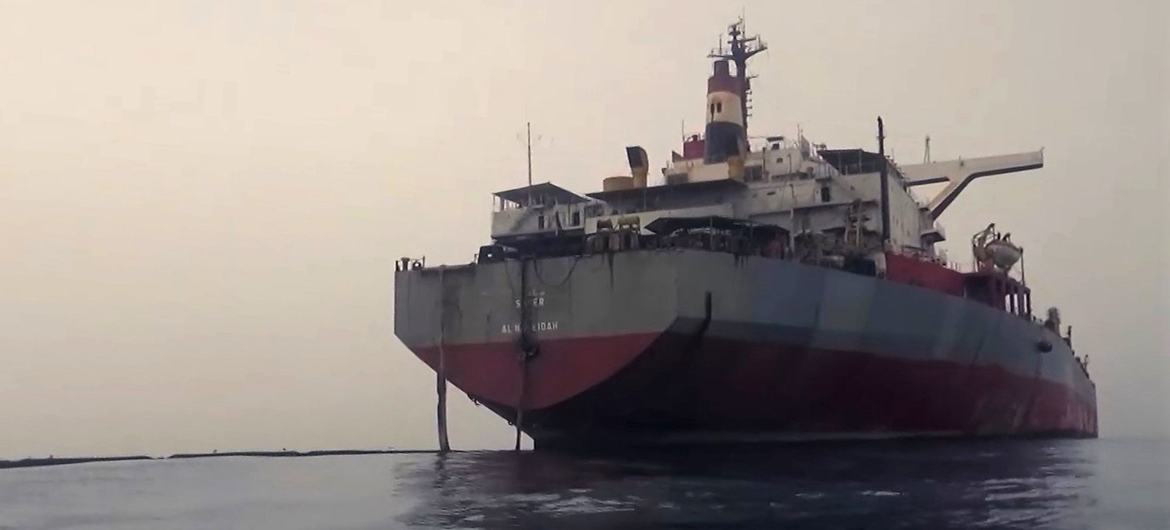The 19-day operation will pump more than a million barrels from the rusting vessel, the Safer, which was abandoned more than eight years ago, to a nearby replacement vessel.
Secretary-General António Guterres said that the UN carried out the dangerous operation because a spill would result in an environmental disaster for the region.
‘Ticking time bomb’
“The United Nations has begun an operation to eliminate what may be the world’s largest time bomb. This is a all-hands-on-deck mission and the culmination of almost two years of political foundationfundraising and project development” said the UN chief.
Lying north of the Yemeni port of Hudaydah, UN officials have warned for years about the possibility that the 47-year-old tanker could crack and explode.
The supertanker was holding four times the amount of oil spilled by the Exxon Valdez – enough to make it the fifth largest oil spill from a tanker in history.
There is a threat at sea
The UNDP has warned that a large spill from Safer could destroy parts of the Red Sea’s marine life. Speaking to reporters in Geneva, spokeswoman Sarah Bel expressed concern for the fishing communities of Yemen’s Red Coast, which are already living in a situation that has collapsed in crisis, as a spill ‘200,000 livelihoods will be wiped out immediately” and “will take twenty-five years to recover.”
Describing the operation as the first of its kind, he was cautious during this “emergency phase” but assured reporters that everything was put in place to “ensure success.”
The FSO Safer has been moored about 4.8 nautical miles southwest of the Ras Issa peninsula on the west coast of Yemen for more than 30 years. In 2015, the production and maintenance of the tanker stopped due to eight years of conflict between a pro-Government Saudi-led coalition, and Houthi rebels. As a result, the ship is no longer in good shape.

FSO Safer, landed on the west coast of Yemen.
Humanitarian and environmental disaster
According to the UNDP, an oil spill would result in the closure of all ports in the area, cutting off food, fuel and other life-saving supplies in Yemen – a country where 80% of the population is already dependent on aid.
The UN chief warned that the The cleanup cost alone could be $20 billion and said shipping through the Suez Canal could be disrupted for weeks.
Praising the cross-UN collaboration in the project, he emphasized the “non-stop political work” that the operation includes “in a country devastated by eight years of war.” But it is noted that this is only a “milestone in the journey”, because the next step involves securing the replacement ship with a special safety buoy.
The UN Secretary-General is calling for an additional $20 million to complete the project, including scrapping the Safer and removing any remaining environmental threats to the Red Sea.
